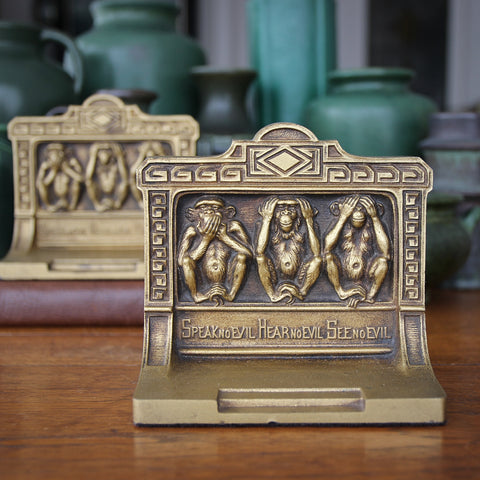There is a very important shrine in Japan for Shinto Buddhists, namely, the Tōshō-gū Temple in Nikko, Japan. Seventeenth Century wooden carvings by sculptor Hidari Jingoro depict the Three Wise Monkeys: Mizaru, Kikazaru and Iwazaru. These monkeys (actually Japanese Macaques) wisely see, hear and speak no evil. But 900 years earlier, in the Eighth Century, Buddhist writings from China made their way to Japan, conveying a similar maxim. And more than a thousand years before that (during the 4th to 2nd Century BC), Confucius's writings (probably collected by his followers) advise us to "Look not at what is contrary to propriety; Listen not to what is contrary to propriety; Speak not what is contrary to propriety." Monkeys—in Asia and elsewhere—are often used as symbols, personifications of humans, especially where learning lessons is concerned.
Mahatma Gandhi famously lived an ascetic life. He did not keep many possessions. But he did have a small sculpture of the Three Wise Monkeys—whom he named Bapu, Ketan and Bandar. Even today one can find shareable "Emojis" of the three monkeys on one's mobile phone.
The heavy bookends above, made by Bradley & Hubbard (Meriden, CT) in the 1920's or 1930's, feature a crisp rendering (in cast iron) of Mizaru, Kikazaru and Iwazaru. They still wear their original golden bronze finish. Click on the photo above to learn more about them.
Though our Greenwich Village store is now permanently closed, LEO Design is still alive and well! Please visit our on-line store where we continue to sell Handsome Gifts (www.LEOdesignNYC.com).
We also can be found in Canonsburg, Pennsylvania at The Antique Center of Strabane (www.antiquecenterofstrabane.com).
Or call to arrange to visit our Pittsburgh showroom (by private appointment only). 917-446-4248


